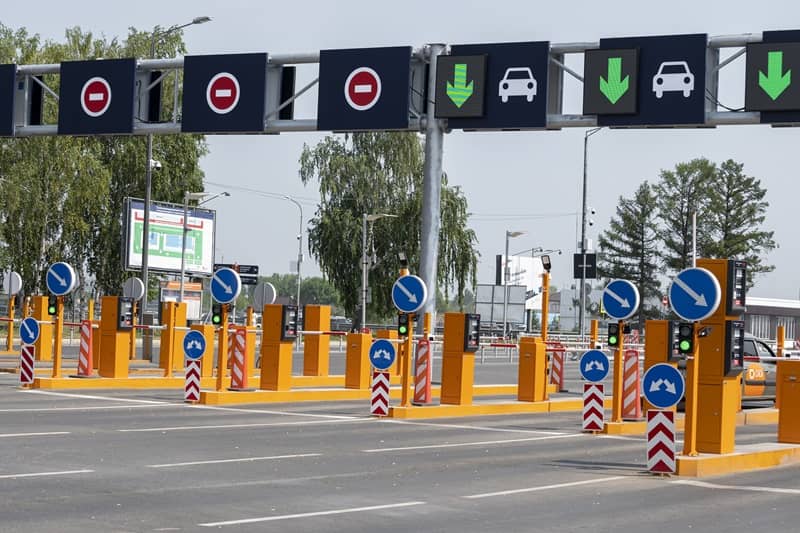Toll Truth: Debunking Common Myths About (Oregon) Tolling

Tolling can be a practical, efficient, and equitable way to pay for highways. Unfortunately, the proposed tolling scheme in Clackamas County is NOT how the average person imagines tolling. Proponents are relying on the public’s generally favorable view of tolling to smuggle in a regressive, costly, and self-serving system that benefits powerful elites and their big-business partners. Let’s take a look at some of the most common myths about tolling in Oregon so Clackamas County residents can make an informed decision about the future of their communities.
Opposed to Tolling? Signing IP-4 helps give Oregonians the right to vote on tolling schemes through a constitutional amendment.
Myth #1: Highway tolls are perfectly normal.
There’s a common assumption that highway tolls are reasonably common which limits pushback to the idea. In reality, there are precisely zero highway tolls in the entire state of Oregon. There are two active bridge tolls, but these systems abide by clear schedules and budgets. This proposal doesn’t represent the continuation of a standardized practice in the state but rather the beginning of a newfangled taxation scheme.
Myth #2: Tolls ALWAYS pay for roads.
Few have a problem with crowdfunding for a local road with tolls. But, that’s assuming those tolls are actually going to build new roads…which isn’t the case in Oregon. The tolling legislation uses strategically conditional language to give the illusion of a promise without any legal requirements. Similar pieces of legislation have proven that if it’s not guaranteed, it’s not getting done. Many Oregon leaders have made it perfectly clear that building roads isn’t even a priority.
Myth #3: Toll roads are temporary.
Most people think tolls are implemented for a limited period until the necessary funds are collected. This isn’t the case in Oregon. There’s no sunset clause in the legislation which means ODOT would have free reign to maintain and even expand the tolling system as long as it darn well pleases. They wouldn’t need any more approval from the public.
Myth #4: Tolling solves congestion.
The irony of the name Congestion Tolling isn’t lost on people familiar with the knock-on effects of tolls. The overwhelming majority of drivers will look for alternative routes to avoid paying. Inevitably, highway traffic will spill into small surrounding communities in Clackamas County without the infrastructure, space, or desire to accommodate it. ODOT admits the project could increase local traffic and car accidents by 100%.
Myth #5: It taxes people who can afford it.
This legislation has the potential to act as a regressive tax on the poor. The financial burden will disproportionately fall on members of lower-income communities who commute for work. That’s to say nothing of how often they’ll need to pay tolls just to get groceries, take their kids to school, or visit family and friends. Supporters boast of an exception for electric vehicles which is really just a loophole for the wealthy who could easily afford the toll.
Myth #6: Tolls generate positive revenue.
Contrary to popular belief, this tolling project isn’t guaranteed to generate positive cash flow. Similar to other government-organized projects, it would almost certainly reach revenue-neutral planning. Some proponents believe they’re supporting a fair and reasonable fundraising machine for their communities. Unfortunately, it’ll likely devolve into a self-sustaining bureaucracy with all ‘surplus’ put towards building out an extremely expensive electric fleet, adding bike paths, expanding operations and increasing internal salaries.
Myth #7: It’s not about control.
It’s easy to cry conspiracy when someone claims this tolling proposition is about controlling the roadways, but the driving forces behind this project aren’t mincing their words. They openly write, discuss, and debate their intention to move Oregonians away from vehicles and towards “sustainable” alternatives. Even one of the key members behind this tolling initiative wrote a book revealing her desire for a carless society.
Not a fan of tolling? You’re not alone! There’s a reason the government was forced into placing a two-year pause on ODOT’s tolling scheme: Oregonians overwhelmingly reject the idea. Right now, there’s no direct way to vote on it. That’s where IP-4 comes in. This constitutional amendment would require a regional vote before any new tolls are put into place. Voters in each county with a border within a 15-mile radius of any proposed tolls will get the chance to vote on it. The law would be retroactive, meaning the proposed tolling of I-205 and I-5 would require a regional vote.
You can download the form here. Please print, sign, and mail both pages.